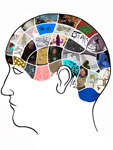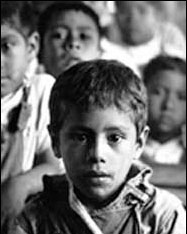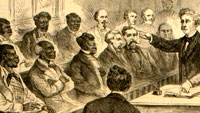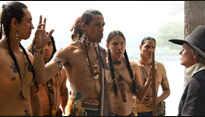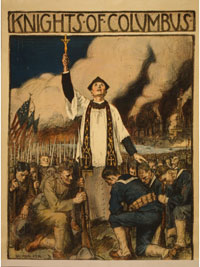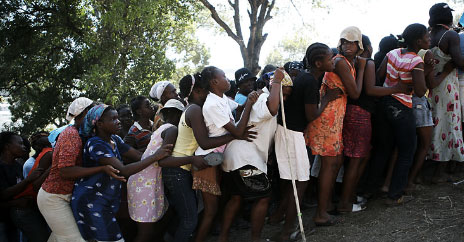Teaching about Vietnam
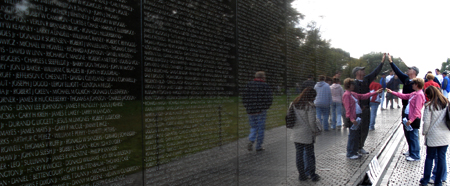
Thirty-five years ago in Vietnam on April 29, 1975, Irving Berlin's seasonally uncharacteristic, White Christmas hit the airwaves via Saigon's Armed Forces Radio. The North Vietnamese offensive against Saigon advanced, and the musical selection was a pre-arranged code to trigger a massive, dramatic American evacuation.
It became the largest helicopter evacuation in history—for 18 hours, heavily loaded Marine helicopters ferried 7,000 Americans and South Vietnamese evacuees from the American Embassy compound to the Tan Son Nhut airfield, ultimately to ships of the Seventh Fleet. Thousands more thronged the gates of the compound, hoping for a place on the airlift.
On April 30, Saigon fell, and in one sense, America's almost thirty-year involvement with war in Vietnam ended.
The meanings and implications of the war in Vietnam are complex and still unresolved. Visceral response competes with the academic analysis to make sense of the era; emotion, memory, and personal experience loom large. Involvement in Iraq has intensified questions and invited contrast and comparison about just and unjust wars, about intervention and non-intervention, about containment, colonialism and post-colonialism, and about unilateral national foreign policy and international interests.
"Even today, many Americans still ask whether the American effort in Vietnam was a sin, a blunder, a necessary war, or a noble cause, or an idealistic, if failed, effort to protect the South Vietnamese from totalitarian government," historian Steve Mintz writes. (See the module Learn About the Vietnam War, part of the online U.S. history textbook, Digital History).
Online, materials continue to proliferate ranging from institutionally-based resources to personal websites from veterans and families. Finding materials becomes a question of selecting from a wealth of viable possibilities. The materials cited here address broad topics and issues of the era.
The National Archives, of course, and Presidential libraries are obvious and credible sources for essays and primary source documents. The Teachers section of the Library of Congress consolidates and extrapolates materials related to Vietnam such as selections from the Veterans Oral History Project. The search mechanism within the Teacher's pages help the selection of appropriate materials.
Similarly, Edsitement offers a variety of lesson plans and links to primary resources, also best selected through Edsitement's search mechanism simply entering the term Vietnam.
Founded by Jan Scruggs, the force behind the Vietnam Veterans Memorial on the National Mall in Washington, DC—and an historical figure in his own right—The Vietnam Veterans Memorial Foundation (VVMF) website is worth a visit from educators and students. Materials offer multiple perspectives on the era, explaining and contextualizing the war socially, politically, and culturally, and then explore how we have negotiated the legacies of the Vietnam era.
For teachers the VVMF is a goldmine of balanced educational resources. Echoes from the Wall: History, Learning and Leadership Through the Lens of the Vietnam War is a free secondary school curriculum guide including lesson plans and primary source materials "is designed not only to educate students about the Vietnam War, but also to use the lessons of that chaotic period to imbue future leaders, sitting in classrooms today, with a heightened sense of responsibility, citizenship and service." Lesson plans and the Teachers Guide cover causes of the war, conflict on the home front, analysis of those who served, the perspective of the Vietnamese, and the aftereffects.
Students will find background essays on the history and meaning of the wall and an opportunity to search for names on the wall. If there's any downside to the VVMF site, it's the lack of images of the memorial itself; however, a segue to GreatBuildings.com from Architecture Week leads to 3d-models, aerial views, google earth linkups, and a variety of perspectives on the Memorial in the context of its location. GreatBuildings.com also includes biographical information and commentary from the site designer, then-21-year-old Maya Lin.
And to support teachers and their curricula, the Teach Vietnam Teachers Network, a national group of nearly 300 members, serves as a point of contact for educators in individual states who answer questions from other teachers about effective teaching of the Vietnam War and development of lesson plans commensurate with state standards. Teachers are invited to request additional materials including The Wall the Heals and Why Vietnam Still Matters (books of essays), posters, a video, and Teacher's Guide.
http://americanhistory.si.edu/militaryhistory/printable/section.asp?id=…
A lesson plan from Conflict and Consensus, a Montgomery County, Maryland, Teaching American History Grant program, Vietnam Primary Source Document Analysis guides students to examine the reasons for US involvement in Vietnam by analyzing primary source documents that relate to the Containment Doctrine.
Other online materials from Conflict and Consensus include videos of scholar analysis and classroom practice and teaching based upon examination of a Vietnam War cartoon. An additional lesson plan, Voices from the My Lai Massacre analyzing public perceptions of the event.
On AP Central, Professor Scott Kaufman from Francis Marion University in South Carolina offers Guide to Vietnam War Resources annotating diverse materials.
Vietnam War: Maps includes maps of selected battles, including the Tet Offensive and historic maps from the Department of State from 11BC through 1966. (Consider using eHistory essays cautiously, if at all; they appear with an accuracy disclaimer.)
